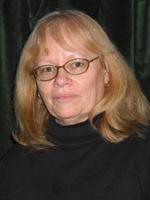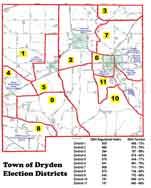Dryden School Board
Tracy Wescott and Paul Clemments reported on the progress of the renovation in all three elementary schools. Work is a bit ahead of schedule, within budget and expected to be done before the January deadline.
It was my luck that Mr Mickelson was there with the final audit report. Yeah. I like audit reports. And, though I've worked with Ciaschi, Dietershagen, Little and Mickelson for years, I've never met Mickelson (or Ciaschi or Dietershagen, for that matter.) He reported an unqualified opinion that the financial status of the district is fairly represented and that internal controls are effective. The district finished the fiscal year with a modest surplus and appears to be in sound fiscal health.
Then my favorite... Mr Bartholomew reporting on the school lunch program. I may be the only parent who ever sought out the food service director on Parents Night. But when my kids moved up to high school, they actually said good things about the cafeteria food. So I looked for Mr Bartholomew to find out how that could happen. He told me his wife and kids liked to shop at Carousel Mall in Syracuse. He doesn't care much for shopping so he'd sit in the food court and watch what kids were eating. Then, back in his office, he'd figure out how to make the food they were choosing nutritious and reasonably priced. Lunch prices have gone up to $2.00 but they still get pizza, burgers, calzones, salads and fresh fruit. Thirty-four percent of Dryden Students are eligible for free or reduced price lunches - so, I guess that helps with the increased price.
The lunch program is struggling financially since the budget structure changed to include employee benefits. Bartholomew offered several suggestions for consideration to avoid having to raise lunch prices further.




